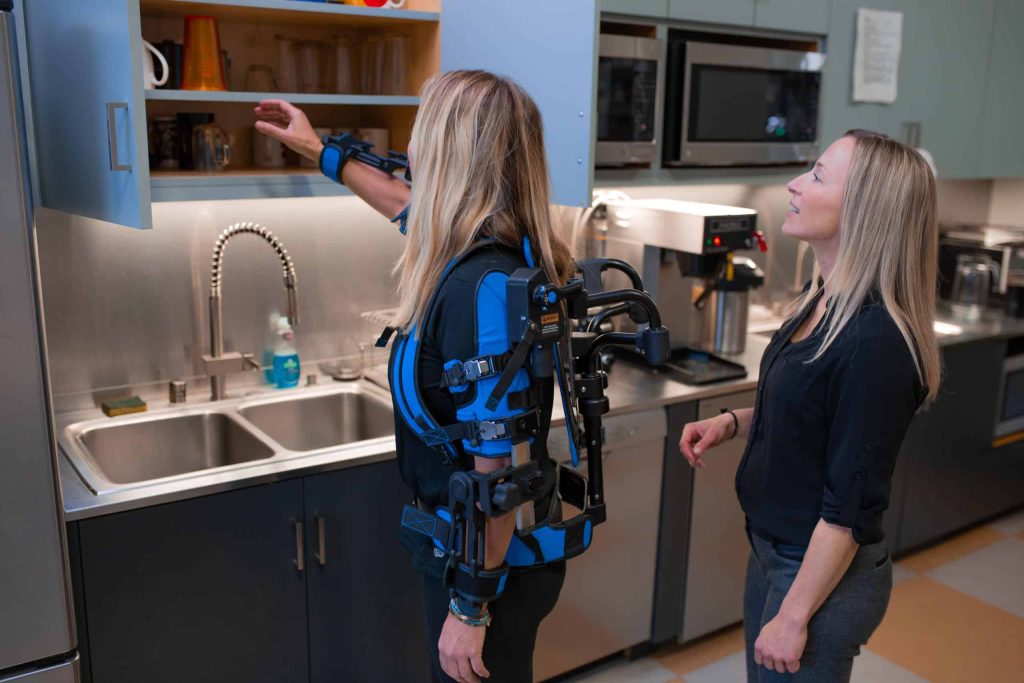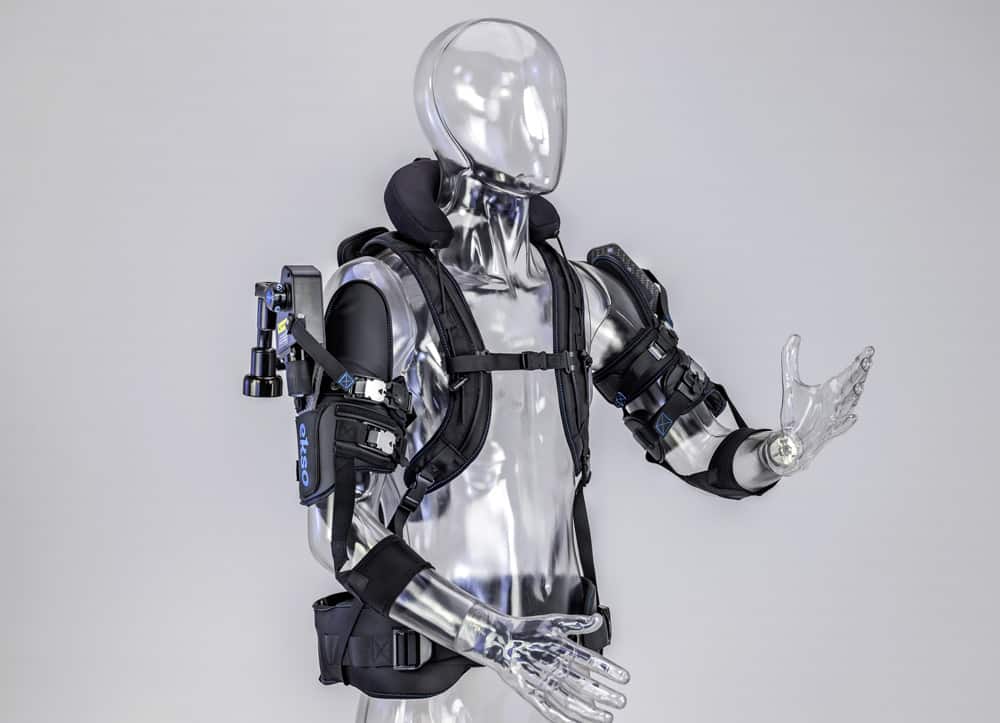Exoskeletons provide protection, increased functionality and reduced injury for humans in the workplace – a burgeoning industry that will likely hit $1.8 billion by 2025, a rise from $68 million in 2014. Last year, 6,000 suits were sold around the world, but estimates reveal there will be 2.6 million on the market by 2025.
There seems to be no stopping exoskeletons from mainstream use throughout a variety of industries, from construction to manufacturing. With so many benefits of these robotic suits (think: reduced injury and fatigue) and so few drawbacks), the technology behind such advancements will only grow. Human augmentation is about enhancing strength and endurance, and that’s just what exoskeletons do.
We thought we would go over some of the major advantages of robotic exoskeleton.

Pros
1. Predictable productivity
Workers using exoskeletons experience less fatigue, with the ability to complete more work than their bodies could typically handle due to the decreased strain on various body parts. Studies show that exoskeletons increase productivity from two to 27 times, depending on the task at hand, allowing operators to work 30 minutes or longer without requiring rest breaks.
2. Improved workplace comfort through postural support
Providing postural support that can follow the movements of the arms without misalignment or resistance can generate a 30 percent reduction in stress on the shoulder muscles. Perceived discomfort measures how hard a person feels he or she is working, used to measure the physical activity intensity level. Exoskeletons have been shown to reduce perceived discomfort in all body areas, including forearms, neck, shoulders, upper arm, upper back, legs and lower back.
3. Reduced muscle fatigue
Exoskeletons reduce fatigue and shoulder and back muscle strain, as well as reduce work-related injuries to the neck, shoulder, and back. Designed to alleviate the burden of repetitive work, for example, EVO is an endurance-boosting assistive upper body exoskeleton which helps construction and other workers better manage overhead work with less fatigue. Here at Ekso Bionics, our #1 stated enemy is fatigue.
4. Improved quality of work
Exoskeletons offers many benefits in a variety of sectors, including construction, agriculture, and automotive. Their primary function is to boost human performance, effectively reduce musculoskeletal disorders (MSDs), improve stamina, and improve quality of work all while enhancing productivity and keeping the workplace healthier overall, says EHS Today.
5. Fewer injuries
One of the main goals of robotic exoskeletons is to combat fatigue in the workplace. In 2019, the most common cause for workplace injuries was extreme fatigue and overexertion, with 20 percent of construction workers reporting severe pain. In fact, construction workers are 5x more likely to report poor health.

Workers who wear these and other suits are at a reduced risk of severe injuries from accidents or overwork, a welcome technology in an industry where worker overexertion costs U.S. employers $15 billion each year in compensation. Construction workers in particular have the most overexertion injuries, with the highest rates of musculoskeletal disorders per capita, says the Bureau of Labor Statistics. The types of injuries they sustain reduce the number of years they can do their jobs and many of them even lead to permanent injury.
Contact Ekso Bionics
To learn more about the exoskeletons manufactured by Ekso Bionics to benefit a variety of industries, contact us at 510-984-1761 or ask for a free demo online.


